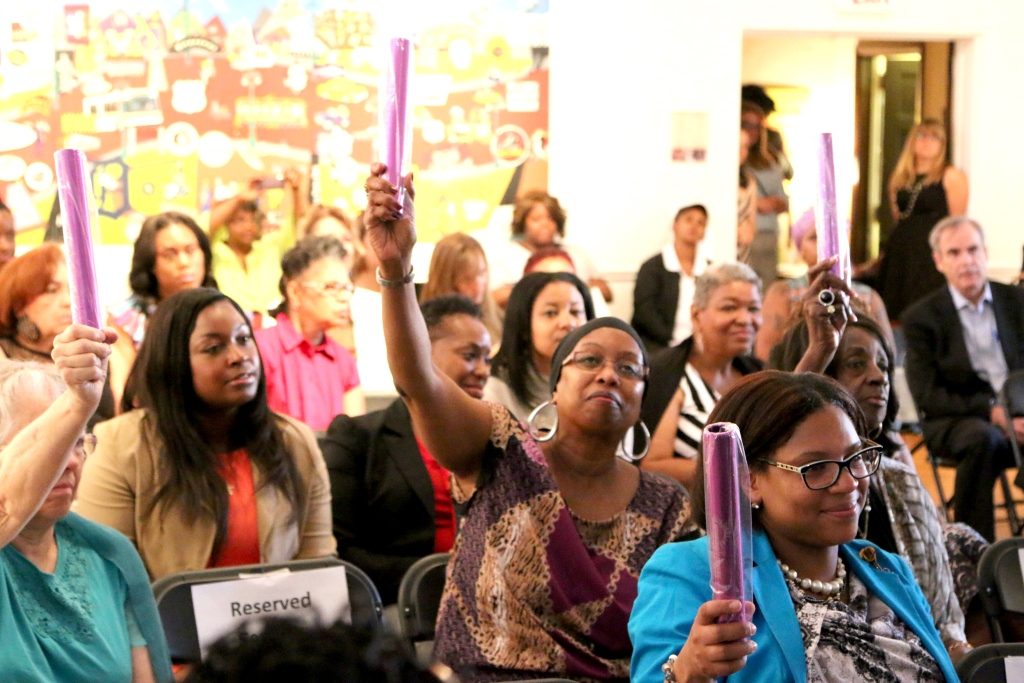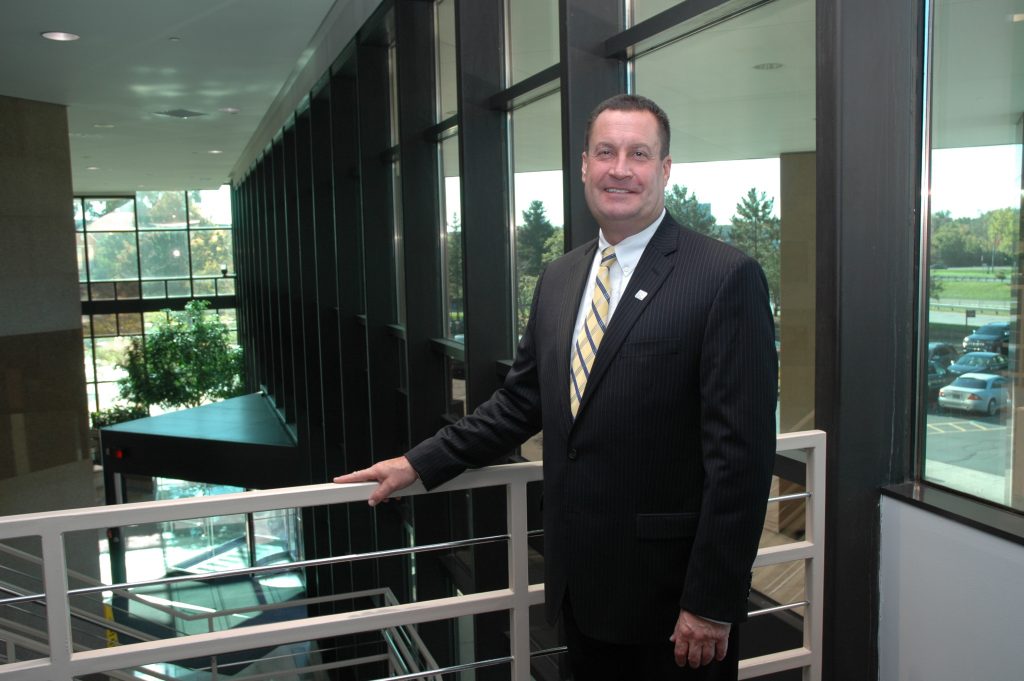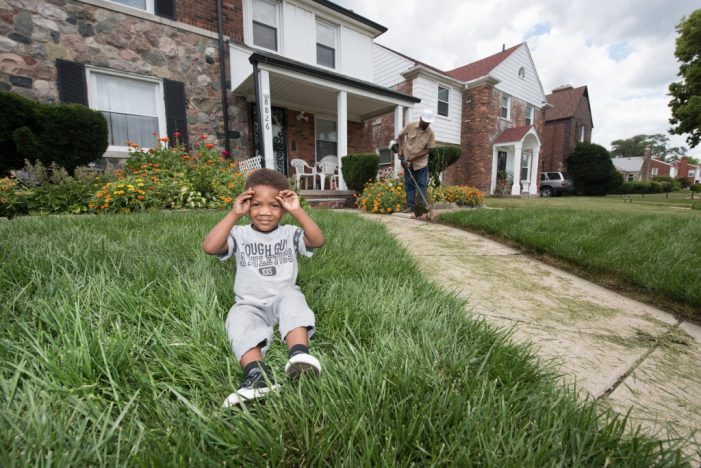Editor’s Note: Prior to and during the upcoming Detroit Regional Chamber’s Detroit Policy Conference, Detroit Unspun/TheHUB will bring you stories that showcase the transformation of our city’s neighborhoods.
There’s good news on the horizon for the many Detroit neighborhood residents who’ve largely felt left out of the tidal wave of investments responsible for the transformation of downtown and Midtown.
 Their time is coming, say financial institution executives interviewed by TheHUB.
Their time is coming, say financial institution executives interviewed by TheHUB.
Although sizeable opportunities exist for explosive growth, residents and financial institutions alike must begin preparations now.
“Each neighborhood is going to drive its own resurgence. There’s no one-size-fits-all solution,” says Matthew B. Elliott, Michigan market president and market executive, Bank of America.

“We (financial institutions) must take a bottom-up approach and listen to what residents want and need, as well as pay attention to market drivers that are unique to each neighborhood,” he says.
And, likewise, neighborhood residents must be ready to articulate and support local wants and needs, says Linda D. Forte, senior vice president of business affairs for Comerica Inc. and Comerica’s chief diversity officer.
“Neighborhoods should be prepared to demonstrate readiness for investments and that goes beyond ongoing blight removal efforts,” she says. “Even after blighted houses come down, many of our neighborhoods need to be spruced up to have the look and feel of someplace people would like to live, walk and work in everyday.”
To help build up neighborhoods, Comerica made more than $15 million in community development loans in Detroit in 2014. It also supports Hatch, a bricks-and-mortar program that funds local neighborhood initiatives.
These programs and many others help stabilize neighborhoods and allow them to expand on their current strengths. That includes well-maintained properties, pristine lawns and evidence of community safety patrols, as well as emphasizing the “it” factor that defines the unique vibe of the neighborhood.
Whether it’s “aging gracefully” or “young and energetic,” each neighborhood should understand what differentiates and sets it apart.
For near-risk neighborhoods, immediate and additional investments will be required.
“Although developers are willing to take risks, they are unlikely to enter and invest in deteriorating neighborhoods ahead of more stable communities,” warns Forte.
This should not serve as any kind of signal for at-risk or near-risk neighborhoods to stop improvement efforts, however small.

“Imminent or not, neighborhoods must work diligently to maintain and improve where they can,” says Forte. “They still need to be prepared because, at some point, development will eventually fan out.”
The focus on home repair and renovation programs needed to shore-up and sustain neighborhoods is critical. For example, Fifth Third Bank invested more than $1 million in home repair grants to Detroit residents over the past five years, according to Riley.
Improving educational institutions also is essential. Forte credits the Skillman Foundation for helping to address the quality of Detroit schools, a critical factor in attracting and building home ownership and residency in the city.
PNC Bank’s $350 million, multi-year, bilingual Grow Up Great initiative provides innovative opportunities that enhance learning and development for America’s underserved children from birth to age 5. Over the past five years, it has invested almost $4 million in Detroit to prepare pre-k children for success in school and life.
All that said, Detroiters hold much of their neighborhoods’ reputation in their hands and need to watch what they say about the city and each other.
“We need Detroiters and our respective media outlets to be talking as favorably as outsiders about Detroit’s neighborhood resurgence,” says Tiffany Douglas, senior vice president, market manager, Bank of America (BOA). “And, as important, we need to understand that our issues are not exclusive to Detroit. Other urban areas have faced and overcome similar challenges.
“What we need is a discourse of possibility,” she says.
BOA has invested in many projects on many scales including the $50-million-plus Broderick Tower development downtown and the $12 million PAL – Kids at the Corner, a youth complex on the corner of Michigan and Trumbull. Other investors in the Broderick project, which included financing, cash and historic tax credits, were Invest Detroit, Chase Bank N.A., and the Michigan Historic Preservation Network.
Talmer Bank and Trust investment of nearly $4.2 million in community development loans is also helping revitalize and stabilize communities in the city. One of those was a $1 million investment in the Marygrove Community in Detroit.

A holistic approach to neighborhood development is more critical now than ever before.
“At Fifth Third Bank we have always taken a holistic approach to helping to stabilize neighborhoods through home ownership. From specialized mortgage programs with down payment assistance, to impact funding to fix up homes, to financial literacy outreach to help people with their financial management. We believe in Detroit neighborhoods and are dedicated to improving the well being of our communities,” says David F. Girodat, president and CEO – Eastern Michigan, Fifth Third Bank.
Even with all current and future investment, no one may be better prepared to address the promise of Detroit’s neighborhoods than its 450 neighborhood block club leaders, many of whom have been at the helm for 30 or more years.
“Our many block club leaders are often taken for granted and undervalued as the neighborhood investment assets they are,” says Forte.
“The stabilization of neighborhoods will be the ultimate test of how far Detroit has come in its economic recovery,” says Riley.
Editor’s note: To showcase more of what’s happening in Detroit neighborhoods we are collaborating with the Detroit Regional Chamber (DRC) and media partners to bring you coverage of the Detroit Policy Conference on February 24. Our media partners include Comcast, Detroit Unspun (Detroit Regional News Hub), WWJ Newsradio 950, 910AM Superstation The Pulse host Karen Dumas, WXYT 1270AM Small Talk with Mark S. Lee, and Detroit Smart Pages Publisher Beverly Smith, as well as our publishers alliance. You can also follow the coverage on our Twitter @DetroitUnspun.



This out-of-touch Bank of America manager states:
"“We need Detroiters and our respective media outlets to be talking as favorably as outsiders about Detroit’s neighborhood resurgence,” says Tiffany Douglas, senior vice president, market manager, Bank of America (BOA)."
Detroiters haven't been seeing the "resurgence." They aren't seeing new jobs, improved schools or services, or increases in economic stability.
Between 2010-2014, over 40,000 Native Detroiters left the city, largely due to economic hardship and home foreclosure. In the same time, roughly 14,000 (mostly white) non-Detroiters moved into their own colony within city, although they largely work outside of the city.
Until serious discussion of the city and state's severe economic and racial inequality are made central to these agendas – Detroiters have every right to resent the newcomers coming in and calling all the shots.